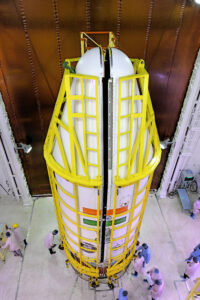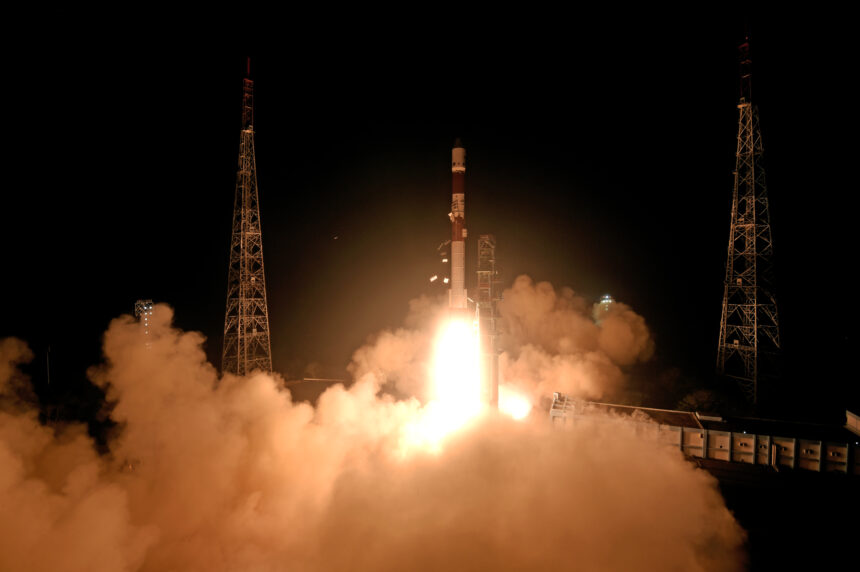NewzVille Desk
In a historic achievement, the Space Docking Experiment (SpaDeX) mission’s docking operation was successfully completed on 16 January, 2025 marking India’s entry into the elite group of nations capable of executing space docking operations.
With this success, India becomes the fourth country in the world to achieve this technological feat. ISRO started the mission on 30 December 2024, with the successful launch of the SpaDeX spacecrfts using Polar Satellite Launch Vehicle (PSLV)-C60, from the Satish Dhawan Space Centre, Sriharikota.
This groundbreaking mission aims to showcase India’s technological prowess in spacecraft rendezvous, docking, and undocking — a critical capability for future advancements such as satellite servicing, space station operations, and interplanetary exploration.

The docking process was executed with exceptional precision. The spacecraft manoeuvred seamlessly from the 15-metre to 3-meter hold point, initiating docking with accuracy leading to successful spacecraft capture. After this, retraction was completed smoothly, followed by rigidisation for stability.
Post-docking, the integrated control of the two satellites as a single object has been successfully achieved, showcasing India’s technological expertise. In the coming days, undocking operations and power transfer checks are scheduled to further validate the system’s performance.
SpaDeX is a cost-effective technology demonstrator mission designed to showcase in-space docking using two small spacecrafts launched by 62nd PSLV flight. This mission is pivotal for India’s future space ambitions, including lunar missions, sample returns, and the development of the Bharatiya Antariksh Station (BAS).
The main goals of the SpaDeX mission are:
# Develop and demonstrate technology for rendezvous and docking using two small spacecrafts.
# Showcase controllability in the docked condition.
# Demonstrate the potential for extending the life of the target spacecraft.
# Test power transfer between docked spacecraft.
The mission demonstrates India’s growing self-reliance in cutting-edge space technologies and reaffirms ISRO’s commitment to advancing its capabilities to meet future challenges in the rapidly evolving field of space exploration.
The SpaDeX mission involves two small satellites, SDX01, which is the Chaser and SDX02, the Target, each weighing approximately 220 kilograms. These spacecraft are androgynous in nature i.e. either of the spacecraft can act as chaser (active spacecraft) during docking.
They are equipped with solar panels, lithium-ion batteries, and a robust power management system. The Attitude and Orbit Control System (AOCS) includes sensors such as star sensors, sun sensors, magnetometers and actuators like reaction wheels, magnetic torquers and thrusters.
The satellites will execute a series of complex manoeuvres to demonstrate the docking process in orbit. Post-docking, the two satellites will operate as a single spacecraft. Electrical power will be transferred from one satellite to the other to confirm the success of the docking.
After successful docking and undocking, the spacecraft will separate and be used for application missions. During undocking, the spacecraft will separate to begin individual payload operations. These payloads will provide high resolution images, natural resource monitoring, vegetation studies and on orbit radiation environment measurements which find numerous applications.





